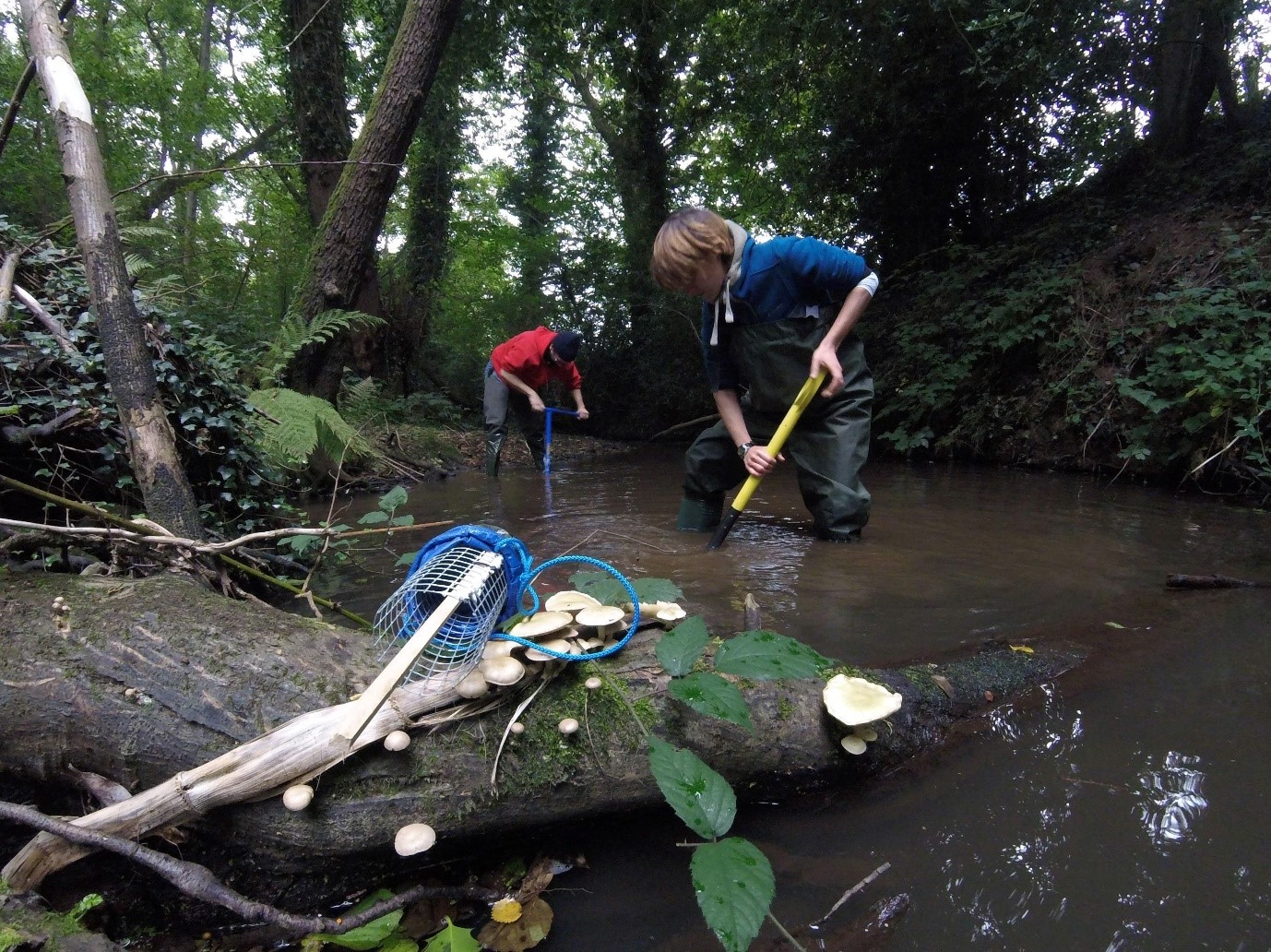Wood in rivers affects invertebrate community traits
11/07/2019

The bed of a river is an important habitat for invertebrates with a diverse range of organisms living within and on the sediment. These invertebrate communities may appear similar at different locations within a river reach, but subtle variations in environmental conditions result in invertebrate species assemblages presenting different characteristics.
For a long time, dead wood has been considered a nuisance in rivers and removed for flood risk, transport, recreation and aesthetic reasons. With changing management practices and new scientific knowledge, wood is beginning to be recognized for its important role driving river processes, both above and below riverbeds, which affect river biodiversity. Yet, how the processes driven by wood affect invertebrate characteristics remains unknown. Functional traits are species characteristics (e.g. body size and form) that reflect adaptation to the surrounding environment, which can provide information on the environmental conditions and pressures to which the species are subjected. To better understand how invertebrates in the bed of rivers respond to wood-induced processes, we explored multiple traits of invertebrates and how they differ at sites where wood is present and absent.
We studied naturally occurring woody debris accumulations in a lowland river in southern England. We sampled invertebrate species living near the surface of the riverbed and deeper in the sediment (see figure). At each sampling site, we also collected environmental information, e.g. sediment type, flow velocity, oxygen and nutrient concentrations, to quantify the variation of traits as a function of environmental variables representing important attributes of wood.
We found that very small invertebrates living more deeply within the sediment had different biological (i.e. aquatic stages, reproduction), physiological (i.e. dispersal, feeding habits) and behavioural (i.e. substrate preferences) traits when found near wood, but the traits of bigger invertebrate living near the riverbed surface did not differ. In the presence of wood, the small invertebrates living below the riverbed were characterized by functional traits that were related to the physical and sedimentological processes occurring around wood (e.g. sediment scour and sorting). The results suggest that wood creates a more dynamic environment with greater variations in local abiotic conditions, resulting in species traits that relate to adaptation to temporal disturbance and spatial refugia. Consequently, the wider ecological effect of wood should be considered when planning river restoration and management solutions.
We found that very small invertebrates living more deeply within the sediment had different biological (i.e. aquatic stages, reproduction), physiological (i.e. dispersal, feeding habits) and behavioural (i.e. substrate preferences) traits when found near wood, but the traits of bigger invertebrate living near the riverbed surface did not differ. In the presence of wood, the small invertebrates living below the riverbed were characterized by functional traits that were related to the physical and sedimentological processes occurring around wood (e.g. sediment scour and sorting). The results suggest that wood creates a more dynamic environment with greater variations in local abiotic conditions, resulting in species traits that relate to adaptation to temporal disturbance and spatial refugia. Consequently, the wider ecological effect of wood should be considered when planning river restoration and management solutions.
For further information read the publication: https://besjournals.onlinelibrary.wiley.com/doi/full/10.1111/1365-2435.13381
Categories & Tags:
Leave a comment on this post:
You might also like…
Keren Tuv: My Cranfield experience studying Renewable Energy
Hello, my name is Keren, I am from London, UK, and I am studying Renewable Energy MSc. My journey to discovering Cranfield University began when I first decided to return to academia to pursue ...
3D Metal Manufacturing in space: A look into the future
David Rico Sierra, Research Fellow in Additive Manufacturing, was recently involved in an exciting project to manufacture parts using 3D printers in space. Here he reflects on his time working with Airbus in Toulouse… ...
A Legacy of Courage: From India to Britain, Three Generations Find Their Home
My story begins with my grandfather, who plucked up the courage to travel aboard at the age of 22 and start a new life in the UK. I don’t think he would have thought that ...
Cranfield to JLR: mastering mechatronics for a dream career
My name is Jerin Tom, and in 2023 I graduated from Cranfield with an MSc in Automotive Mechatronics. Originally from India, I've always been fascinated by the world of automobiles. Why Cranfield and the ...
Bringing the vision of advanced air mobility closer to reality
Experts at Cranfield University led by Professor Antonios Tsourdos, Head of the Autonomous and Cyber-Physical Systems Centre, are part of the Air Mobility Ecosystem Consortium (AMEC), which aims to demonstrate the commercial and operational ...
Using grey literature in your research: A short guide
As you research and write your thesis, you might come across, or be looking for, ‘grey literature’. This is quite simply material that is either unpublished, or published but not in a commercial form. Types ...






